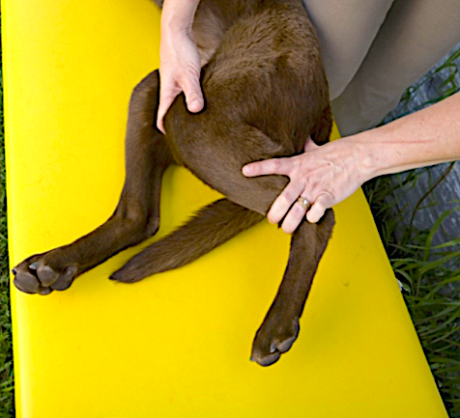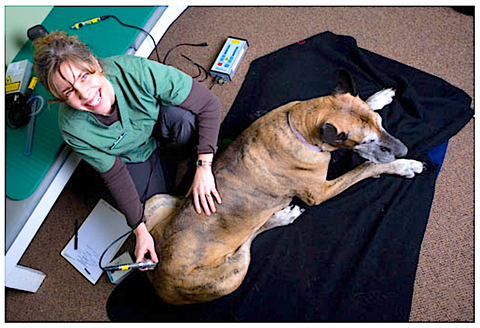

I found a fascinating article that I think could be of relevance to our sporting dogs. I’m just going to put the abstract up here to start.
———————
The immediate effect of neurodynamic techniques on jumping performance: A randomised double-blind study
Aksoy, Cihan C. | Kurt, Vedat | Okur, İsmail | Taspınar, Ferruh | Taspinar, Betül
Journal of Back and Musculoskeletal Rehabilitation, vol. 33, no. 1, pp. 15-20, 2020
BACKGROUND AND OBJECTIVES: Neurodynamic techniques are used to restore neural functions. However, there are few studies about the effects on performance. The aim of this study was to investigate the immediate effects on vertical jumping (VJ) and horizontal jumping (HJ) of 2 different tension loading techniques applied to young adults.
MATERIAL AND METHOD: In this randomised double-blind study, a total of 68 participants with a mean age of 21.31 ± 1.21 years were separated into 2 groups using the closed envelope system: the femoral nerve mobilization (FNM) group and the sciatic nerve mobilization (SNM) group. The FNM and SNM techniques were applied as 2 seconds stretching with 2 seconds resting for 10 repetitions. The VJ and HJ performance of the participants was evaluated before and after the interventions by a researcher blinded to the groups.
RESULTS: The mean VJ performance before and after interventions was measured as 34.56 ± 7.80 cm and 35.89 ± 8.15 cm in the FNM group (p < 0.05) and 31.74 ± 8.31 cm and 32.76 ± 8.45 cm in the SNM group (p < 0.05). The effects of the techniques on HJ performance were not statistically significant (p > 0.05). There was no superiority between the techniques (p > 0.05).
CONCLUSION: The neurodynamic techniques were found to provide an immediate increase in VJ performance. Neurodynamic techniques are generally used in patient populations to improve treatment outcomes. According to these study results, neurodynamic techniques can be safely used to provide an immediate increase in performances of individuals with no lower extremity problems.
———————
So, firstly, what are they talking about? Neurodynamic techniques are ways to ‘stretch’ a nerve. However, from a more realistic perspective, they are more or less improving fascial restrictions along a nerve, enhancing axoplasmic flow (the streaming of cytoplasm along the nerve), and likely having a host of other mechanical and physiological effects.
We know from studies that the neural tensions tests in the dog are similar to those in people (at least for the rear limbs) – Babbage et al 2007 & Gruenfelder et al 2006. See below:


So… just throwing it out there as ‘food for thought’ – Might we be able to enhance sporting dog performance as well with just ten each of these dural glides? Recognizing, of course, that technique is key.
- These are NOT static stretches.
- Additionally, I would recommend doing them in standing before or after an active warm up.
- And yet another point, for those who might be reading this blog and not in the field of canine rehab / physiotherapy, you would really need to be instructed hands on in how to perform these techniques (just covering all readership here)!
Wouldn’t it be interesting if these techniques demonstrated improvements in athletic function in canines as well as humans? Now if somebody is looking for a research project…
All the best folks!
Cheers, Laurie
Author: Laurie Edge-Hughes
Link: https://www.fourleg.com/Blog/457/Neurodynamic-techniques-and-jumping-performance


